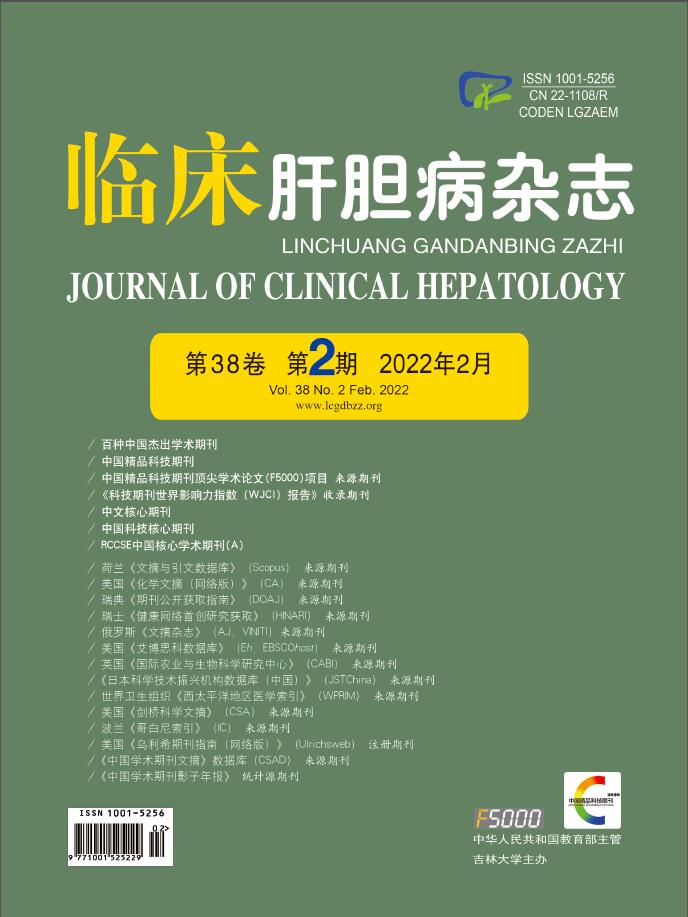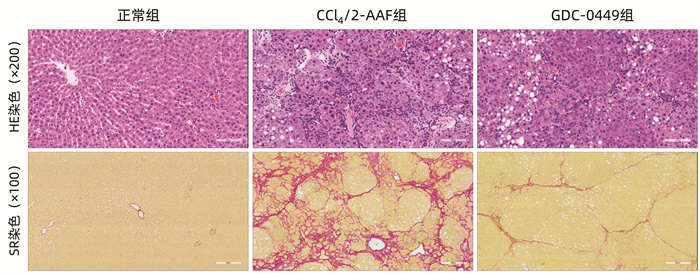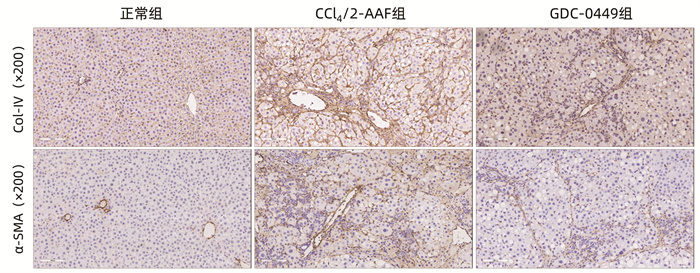| [1] |
LLOVET JM, ZUCMAN-ROSSI J, PIKARSKY E, et al. Hepatocellular carcinoma[J]. Nat Rev Dis Primers, 2016, 2: 16018. DOI: 10.1038/nrdp.2016.18. |
| [2] |
D'AMICO G, MORABITO A, D'AMICO M, et al. New concepts on the clinical course and stratification of compensated and decompensated cirrhosis[J]. Hepatol Int, 2018, 12(Suppl 1): 34-43. DOI: 10.1007/s12072-017-9808-z. |
| [3] |
PAROLA M, PINZANI M. Liver fibrosis: Pathophysiology, pathogenetic targets and clinical issues[J]. Mol Aspects Med, 2019, 65: 37-55. DOI: 10.1016/j.mam.2018.09.002. |
| [4] |
ASRANI SK, DEVARBHAVI H, EATON J, et al. Burden of liver diseases in the world[J]. J Hepatol, 2019, 70(1): 151-171. DOI: 10.1016/j.jhep.2018.09.014. |
| [5] |
|
| [6] |
KISSELEVA T, BRENNER D. Molecular and cellular mechanisms of liver fibrosis and its regression[J]. Nat Rev Gastroenterol Hepatol, 2021, 18(3): 151-166. DOI: 10.1038/s41575-020-00372-7. |
| [7] |
MARCELLIN P, GANE E, BUTI M, et al. Regression of cirrhosis during treatment with tenofovir disoproxil fumarate for chronic hepatitis B: A 5-year open-label follow-up study[J]. Lancet, 2013, 381(9865): 468-475. DOI: 10.1016/S0140-6736(12)61425-1. |
| [8] |
D'AMBROSIO R, AGHEMO A, RUMI MG, et al. A morphometric and immunohistochemical study to assess the benefit of a sustained virological response in hepatitis C virus patients with cirrhosis[J]. Hepatology, 2012, 56(2): 532-543. DOI: 10.1002/hep.25606. |
| [9] |
VILAR-GOMEZ E, MARTINEZ-PEREZ Y, CALZADILLA-BERTOT L, et al. Weight loss through lifestyle modification significantly reduces features of nonalcoholic steatohepatitis[J]. Gastroenterology, 2015, 149(2): 367-378. DOI: 10.1053/j.gastro.2015.04.005. |
| [10] |
MACHADO MV, DIEHL AM. Hedgehog signalling in liver pathophysiology[J]. J Hepatol, 2018, 68(3): 550-562. DOI: 10.1016/j.jhep.2017.10.017. |
| [11] |
SHACKEL NA, MCGUINNESS PH, ABBOTT CA, et al. Identification of novel molecules and pathogenic pathways in primary biliary cirrhosis: cDNA array analysis of intrahepatic differential gene expression[J]. Gut, 2001, 49(4): 565-576. DOI: 10.1136/gut.49.4.565. |
| [12] |
ISHAK K, BAPTISTA A, BIANCHI L, et al. Histological grading and staging of chronic hepatitis[J]. J Hepatol, 1995, 22(6): 696-699. DOI: 10.1016/0168-8278(95)80226-6. |
| [13] |
LO RC, KIM H. Histopathological evaluation of liver fibrosis and cirrhosis regression[J]. Clin Mol Hepatol, 2017, 23(4): 302-307. DOI: 10.3350/cmh.2017.0078. |
| [14] |
OMENETTI A, CHOI S, MICHELOTTI G, et al. Hedgehog signaling in the liver[J]. J Hepatol, 2011, 54(2): 366-373. DOI: 10.1016/j.jhep.2010.10.003. |
| [15] |
FARGNOLI MC, PELLEGRINI C, PICCERILLO A, et al. Clinical determinants of complete response to vismodegib in locally advanced basal cell carcinoma: A multicentre experience[J]. J Eur Acad Dermatol Venereol, 2021, 35(12): e923-e926. DOI: 10.1111/jdv.17588. |
| [16] |
PRATAP A, SINGH S, MUNDRA V, et al. Attenuation of early liver fibrosis by pharmacological inhibition of smoothened receptor signaling[J]. J Drug Target, 2012, 20(9): 770-782. DOI: 10.3109/1061186X.2012.719900. |
| [17] |
SICKLICK JK, LI YX, CHOI SS, et al. Role for hedgehog signaling in hepatic stellate cell activation and viability[J]. Lab Invest, 2005, 85(11): 1368-1380. DOI: 10.1038/labinvest.3700349. |
| [18] |
KUMAR V, DONG Y, KUMAR V, et al. The use of micelles to deliver potential hedgehog pathway inhibitor for the treatment of liver fibrosis[J]. Theranostics, 2019, 9(25): 7537-7555. DOI: 10.7150/thno.38913. |
| [19] |
SICKLICK JK, LI YX, MELHEM A, et al. Hedgehog signaling maintains resident hepatic progenitors throughout life[J]. Am J Physiol Gastrointest Liver Physiol, 2006, 290(5): g859-g870. DOI: 10.1152/ajpgi.00456.2005. |
| [20] |
OMENETTI A, SYN WK, JUNG Y, et al. Repair-related activation of hedgehog signaling promotes cholangiocyte chemokine production[J]. Hepatology, 2009, 50(2): 518-527. DOI: 10.1002/hep.23019. |
| [21] |
OMENETTI A, POPOV Y, JUNG Y, et al. The hedgehog pathway regulates remodelling responses to biliary obstruction in rats[J]. Gut, 2008, 57(9): 1275-1282. DOI: 10.1136/gut.2008.148619. |
| [22] |
OMENETTI A, YANG L, LI YX, et al. Hedgehog-mediated mesenchymal-epithelial interactions modulate hepatic response to bile duct ligation[J]. Lab Invest, 2007, 87(5): 499-514. DOI: 10.1038/labinvest.3700537. |








 DownLoad:
DownLoad:



